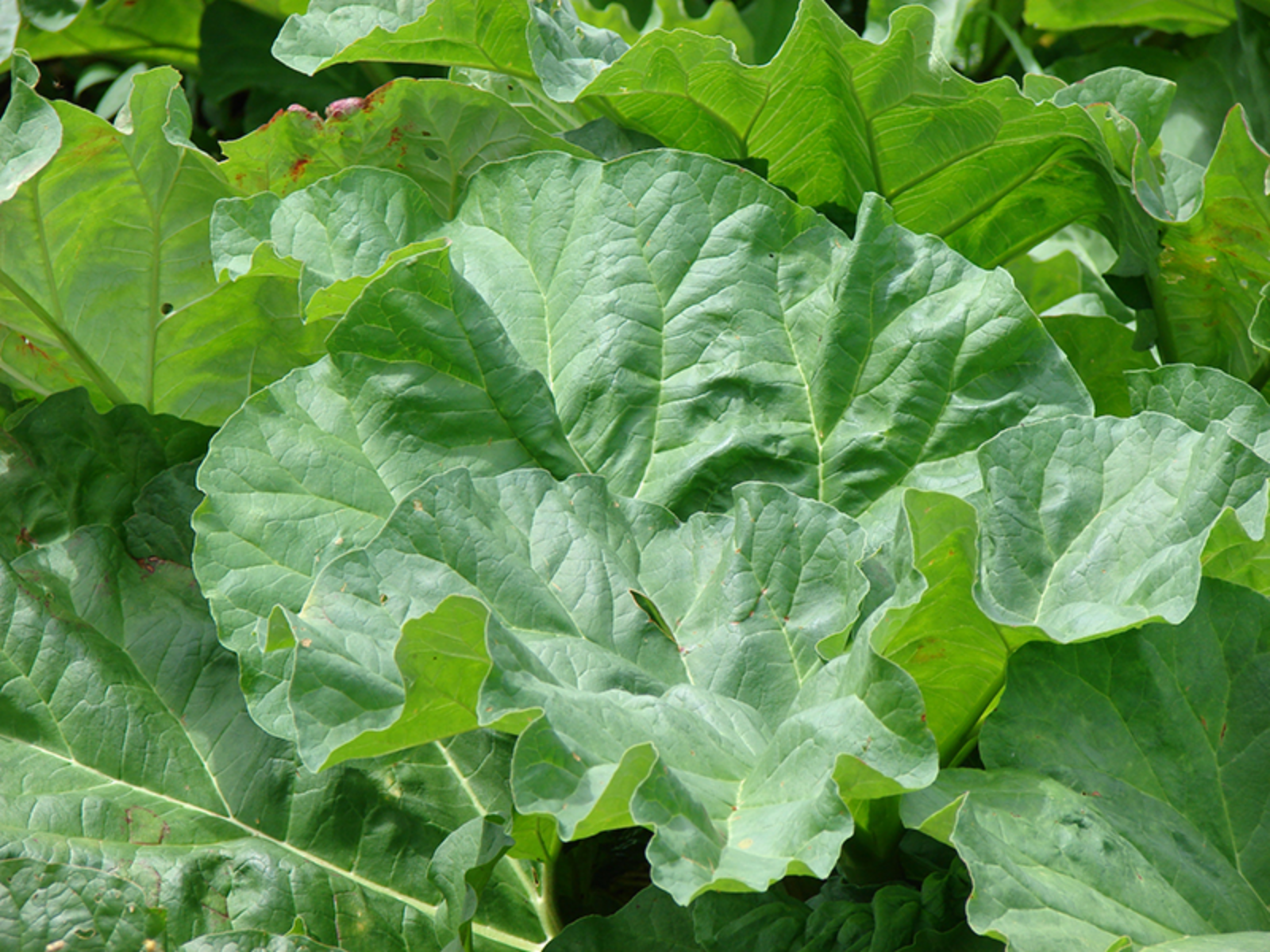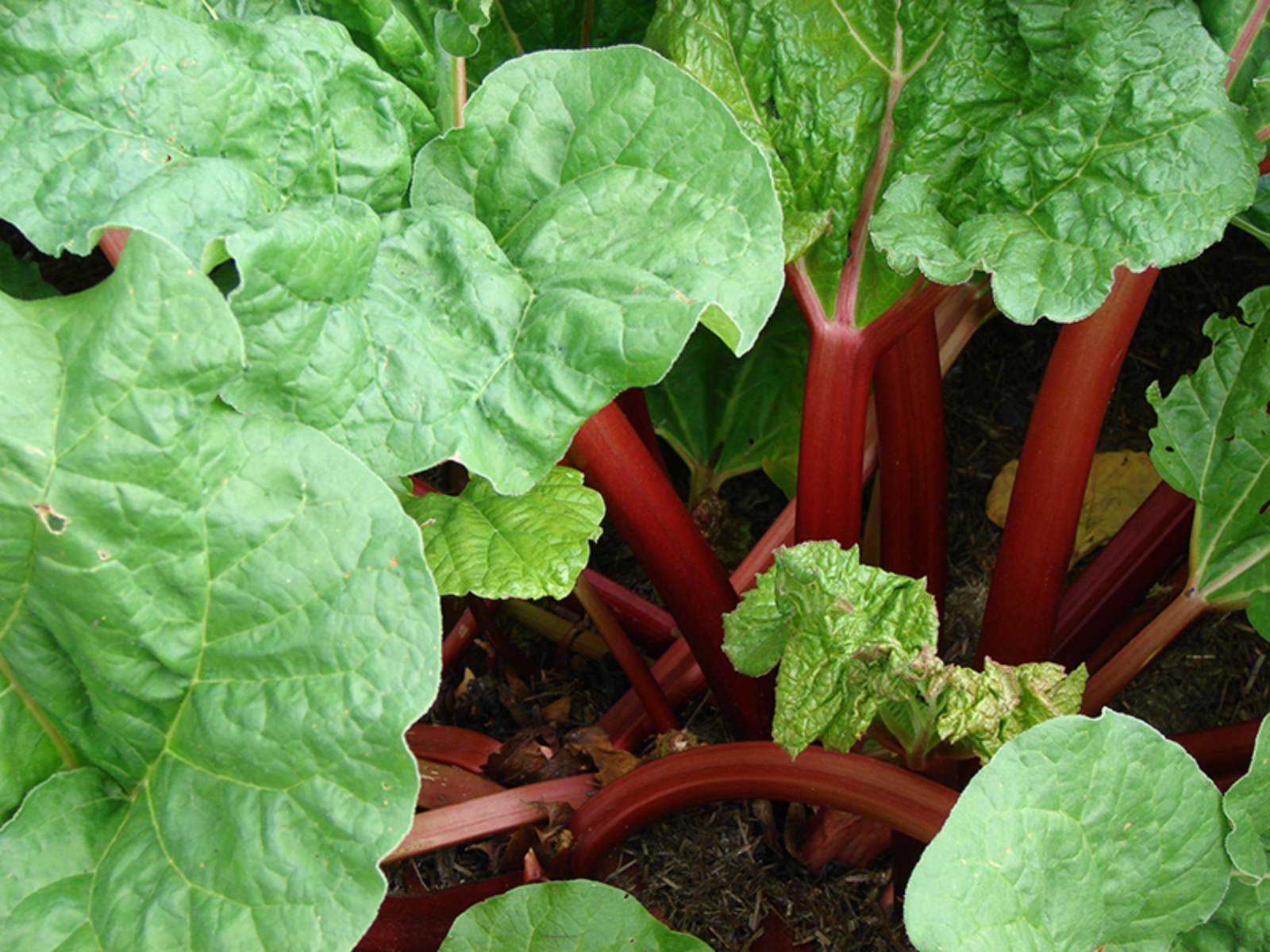Picture of the Week
April 12, 2021
Rhubarb
Rosie Lerner, Consumer Horticulture Specialist-Retired, Purdue University
Rhubarb, sometimes called pieplant, is an herbaceous perennial grown for the unique, tart flavor of the thick leaf stalks (petioles). The leafy blades contain toxic levels of oxalic acid and, therefore are not edible, either raw or cooked. Gardeners often inquire whether a frost or a freeze causes the oxalic acid to move into the stalks, rendering them poisonous. There is little evidence that supports the idea of the stalks becoming toxic following a frost or freeze. Nor is there clear evidence to say that stalks do not become toxic. The quality of the rhubarb is certainly suspect if subjected to a hard freeze; stalks will turn mushy. But what about stalks that have been exposed to low temperatures without obvious indications of freeze injury?
What we do know is that all parts of the rhubarb plant contain oxalic acid, which is toxic if consumed in high enough quantities. The leafy blades of the rhubarb plant contain far more than the stalks, such that the stalks are safe to eat while the blades are not. And oxalic acid content varies with the time of year and other factors. Several other vegetables, including spinach, lettuce, collards, beet greens and parsley, also contain varying amounts of oxalic acid.
Click image to enlarge
As always, if there is any doubt, it is better to play it safe!




